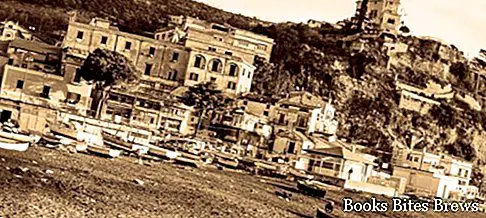What to see in Vietri sul Mare, an itinerary including the main monuments and places of interest, including the Church of San Giovanni Battista and the ceramic museum.
Tourist information
Located at the beginning of the Amalfi Coast, Vietri sul Mare is located on a terrace overlooking the sea, opposite the northern entrance to Salerno.
Thanks to the mild climate and the beautiful scenery in which it is immersed, Vietri sul Mare has become over time one of the most popular tourist destinations in the area.
The town draws its origins from Marcina, an ancient Etruscan city, passed in the following centuries under Roman rule, as evidenced by the remains of ancient tombs and Roman baths.
When Marcina was destroyed in 455 AD, it is not clear whether due to the vandals of Genserico or floods, the surviving inhabitants moved to the area located at the foot of Mount San Liberatore, giving rise to Vietri.
The main monument of the town is the church of San Giovanni Battista, dating back to the seventeenth century, with dome and bell tower decorated with wonderful pottery of the craftsmanship active in the place.
The portal is surmounted by a closed oculus of the twentieth century, where the image of the patron saint painted on ceramic is placed.
In the single nave interior there are altars decorated with majolica, except for the high altar, made of marble, as well as seventeenth and eighteenth century paintings.
What see
The eighteenth-century Archconfraternity of the Annunciation and the Rosary is decorated on the facade with colored majolica, also has an interior frescoed in the eighteenth century.
The Solimene Ceramics Factory is a valid example of organic architecture dating back to the post-war period and built by Paolo Soleri, inside it there is a large collection of contemporary ceramics.
The Church of the Madonna dell’Arco is located on the homonymous road that connects Marina di Vietri sul Mare with the Amalfi Coast, at the point where there is another road that leads to the hamlet of Raito.
Recommended readings- Sapri (Campania): what to see
- Campania: Sunday day trips
- Amalfi (Campania): what to see
- Acciaroli (Campania): what to see
- Teano (Campania): what to see
These small connecting roads follow ancient paths used by the inhabitants to find refuge in the upper areas of Vietri, corresponding to the current hamlets of Raito and Albori, with the aim of protecting themselves from Saracen attacks.
The Saracen Tower of Marina di Vietri, together with other towers, represented a valid sighting system for pirate ships, with sentries posted in the upper part that passed signals using fires and clouds of smoke, each tower being visible from the others.
Other interesting places to see are the paths that connect the upper hamlets of Raito, Albori with the Fonte del Cesare, Dragonea with the valley of Cava dei Tirreni and Badia.
Following these paths, you come to a crossroads that leads to the paths of Avvocatella and Avvocata, the latter called "Path of the Gods", as the views you have are divine, for their being of unparalleled beauty.
The production of majolica, tradition active since medieval times, is protected by its own quality brand.
The ceramic museum, located in the turret of Villa Guariglia in Raito, preserves ceramic finds from the period between the eighteenth and the first half of the twentieth century.




